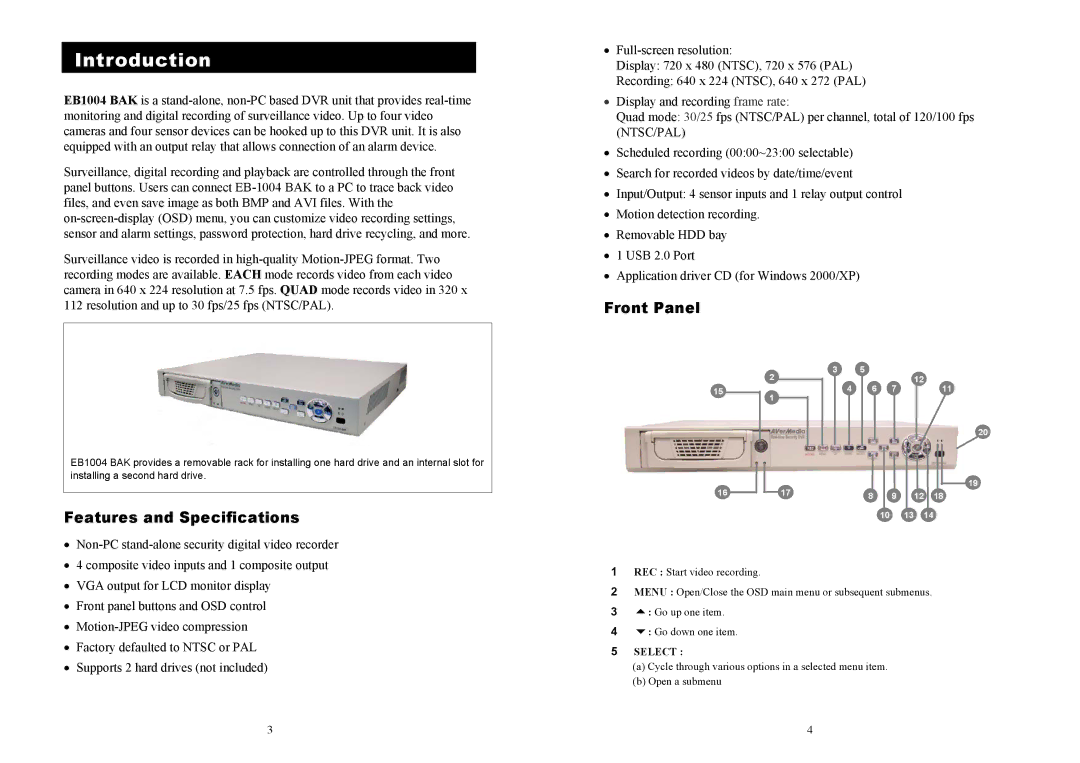
Introduction
EB1004 BAK is a
Surveillance, digital recording and playback are controlled through the front panel buttons. Users can connect
Surveillance video is recorded in
•
Display: 720 x 480 (NTSC), 720 x 576 (PAL)
Recording: 640 x 224 (NTSC), 640 x 272 (PAL)
•Display and recording frame rate:
Quad mode: 30/25 fps (NTSC/PAL) per channel, total of 120/100 fps (NTSC/PAL)
•Scheduled recording (00:00~23:00 selectable)
•Search for recorded videos by date/time/event
•Input/Output: 4 sensor inputs and 1 relay output control
•Motion detection recording.
•Removable HDD bay
•1 USB 2.0 Port
•Application driver CD (for Windows 2000/XP)
Front Panel
EB1004 BAK provides a removable rack for installing one hard drive and an internal slot for installing a second hard drive.
15
2
1
3 5
12
4 | 6 | 7 | 11 |
20
19
Features and Specifications
1617
89 12 18
10 13 14
•
•4 composite video inputs and 1 composite output
•VGA output for LCD monitor display
•Front panel buttons and OSD control
•
•Factory defaulted to NTSC or PAL
•Supports 2 hard drives (not included)
3
1REC : Start video recording.
2MENU : Open/Close the OSD main menu or subsequent submenus.
3: Go up one item.
4: Go down one item.
5SELECT :
(a)Cycle through various options in a selected menu item.
(b)Open a submenu
4
